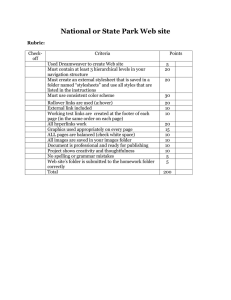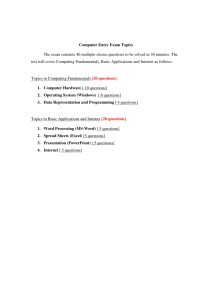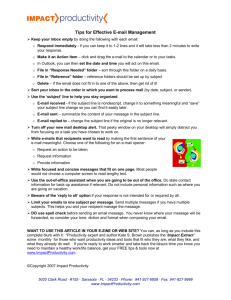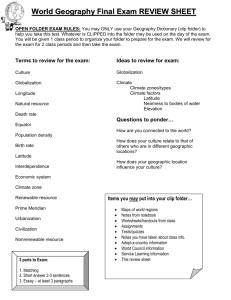The Plan for the Second Round of Papers Here are the texts you
advertisement
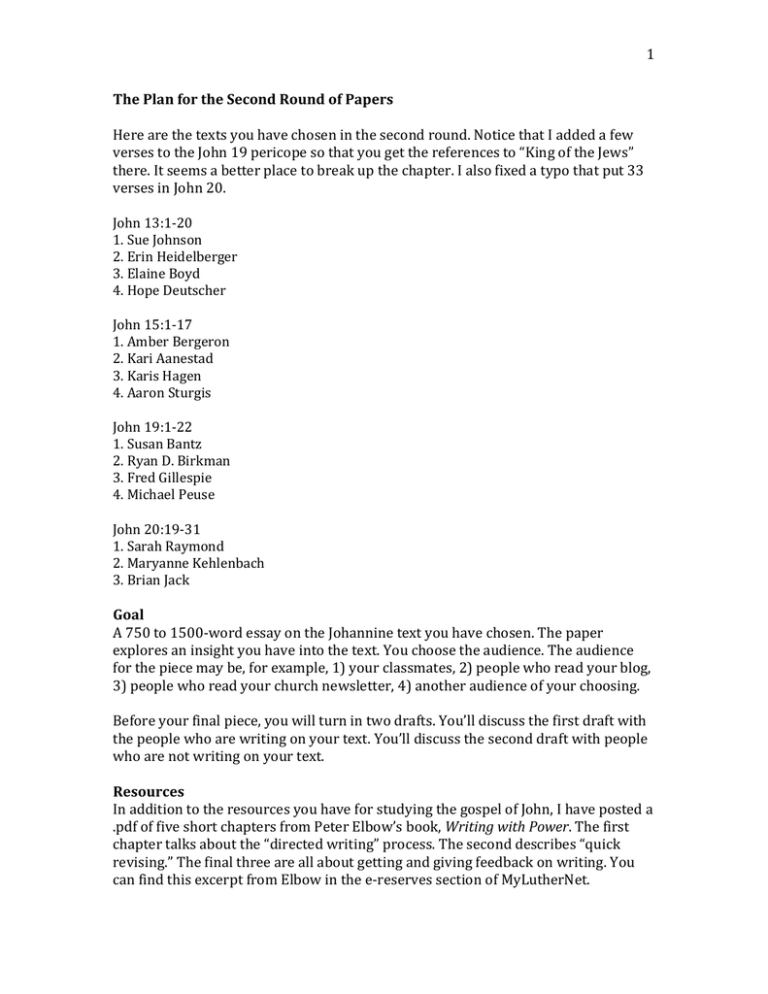
1 The Plan for the Second Round of Papers Here are the texts you have chosen in the second round. Notice that I added a few verses to the John 19 pericope so that you get the references to “King of the Jews” there. It seems a better place to break up the chapter. I also fixed a typo that put 33 verses in John 20. John 13:1-20 1. Sue Johnson 2. Erin Heidelberger 3. Elaine Boyd 4. Hope Deutscher John 15:1-17 1. Amber Bergeron 2. Kari Aanestad 3. Karis Hagen 4. Aaron Sturgis John 19:1-22 1. Susan Bantz 2. Ryan D. Birkman 3. Fred Gillespie 4. Michael Peuse John 20:19-31 1. Sarah Raymond 2. Maryanne Kehlenbach 3. Brian Jack Goal A 750 to 1500-word essay on the Johannine text you have chosen. The paper explores an insight you have into the text. You choose the audience. The audience for the piece may be, for example, 1) your classmates, 2) people who read your blog, 3) people who read your church newsletter, 4) another audience of your choosing. Before your final piece, you will turn in two drafts. You’ll discuss the first draft with the people who are writing on your text. You’ll discuss the second draft with people who are not writing on your text. Resources In addition to the resources you have for studying the gospel of John, I have posted a .pdf of five short chapters from Peter Elbow’s book, Writing with Power. The first chapter talks about the “directed writing” process. The second describes “quick revising.” The final three are all about getting and giving feedback on writing. You can find this excerpt from Elbow in the e-reserves section of MyLutherNet. 2 Step One - Studying For the paper that is due Tuesday evening, do a close reading of the text and any exegetical work that you think will help you read the text closely and with understanding. This might include trying to outline scenes, looking up words, comparing translations, checking out commentaries or other writing on the text (secondary sources are not off limits; they are just not your primary interest). Scribble, take notes, pray, study. Your process is yours at this point. Step Two - Writing At some point when the studying seems to have run its course, turn to writing. Write in a sustained session on the topic of your text (20-60 minutes). Do not rush, but don’t labor over the writing either. “Don’t let yourself repeat or digress or get lost, but don’t worry about the order of what you write, the wording, or about crossing out what you decide is wrong” (Peter Elbow, Writing with Power, p. 30). Step Three – Revising & Rewriting Spend the same length of time you spent writing, but this time, pull out the best parts of your writing, circle or highlight what you think you’re trying to say, and rewrite. This is quick, again, 20-60 minutes. The goal is to get a piece of writing in “draft” shape to share with your fellow text members for feedback. Step Four – Posting Tuesday at 8:00 p.m. Post the paper in MyLutherNet, in the folder for “Exegesis paper #1” that is related to your text. (Don’t put it in “finished papers here” or whatever that folder is named.) Feedback Type - When you post, in the message where you attach your document, tell those of us reading it what kind of feedback you want. Read the Elbow material on two different kinds of feedback. He gives many more questions to spur feedback than we can use. Look through them, and decide what kind of feedback you would like on the piece you posted. Get text-mates’ papers from the same folder and read them before class the next day. Step Five – Feedback in Class In class, take about 5-8 minutes with each paper. The author reminds the readers what kind of feedback she is looking for. The author listens to the conversation about the paper and takes notes. After a few minutes, the author summarizes what she heard. After a couple of minutes more, move to the next person in the group. Step Six – Writing & Revising Again/More, and Posting Write on the text again, expanding, focusing and fine-tuning your writing in whatever way the reading and sharing practice has made it seem good to you. This step will probably look like a repetition of Steps Two, Three, and Four above. Post 3 the second draft by Wednesday at 8:00 p.m. in the folder provided (I’ll need to make new groups, so expect new folders for this step.) Again, ask for the type of feedback you want. Step Seven – Feedback in Class The shared goal of the group gathered with the paper is to appreciate the piece (somebody say, “Thank you.”) and to help make the piece better, where “better” means more likely to get the response from the audience that the author is going for (e.g. to inspire, comfort, challenge, etc.). Step Eight – Create Final Draft Incorporate the advice given by your Step Seven group, as well as your own sense of where this piece needs to go. Create and post the final draft of your essay in the folder provided. We will post all of these essays in the same folder, so people can have a “set” of the final essays if they like. Post by Thursday at 8:00 p.m. We won’t break into groups on Friday to talk about the papers, though we might spend some time in groups to talk about final project ideas.

